Wouldn’t you agree that the pineapple has an intimidating je ne sais quoi about it? I mean, you’d never guess that the fruit’s flesh is luxuriously sweet-sour by just looking at its weird rough, tough and scaly skin! And cutting the spiky bugger properly (without wasting a lot of the flesh) is a work of art. Plus have you ever seen a pineapple plant? Baby pineapples look like they’re growing on top of a giant, buried pineapple… But what I find the most amazing about this fruit is all of its amazing health properties and how it gives a big bang of flavor to dishes. In this article, you’ll discover why the pineapple can do so much more than simply act as a lovely garnish for your tropical cocktails. I’ll also bust a few myths regarding how to select the perfect pineapple.
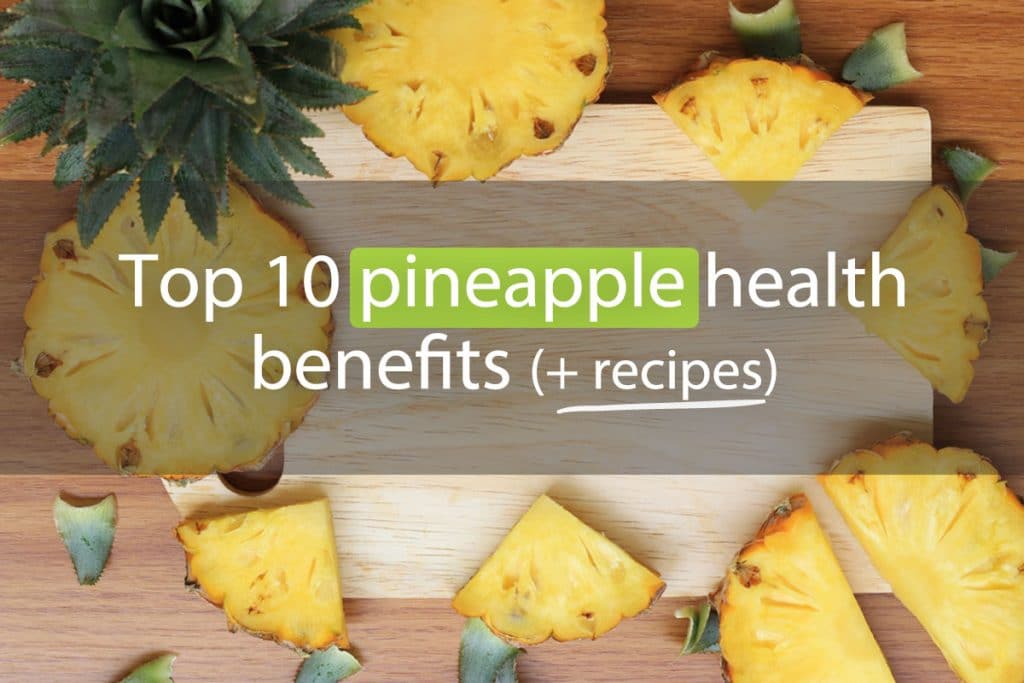
6 awesome facts about the pineapple you probably didn’t know
Call me a nerd, but history and facts fascinate me! Keep reading to find out what I mean – don’t worry; you’re not about to go through a tedious history lesson.
1. Contrary to popular belief, the pineapple does not originate from Hawaii – there are reports that Christopher Columbus discovered this fruit in 1493 on the island of Guadeloupe.
2. The word ‘pineapple’ in the English language was originally used to describe pine cones.
3. The pineapple is called ananas in French – this comes from the word nanas which meant ‘excellent fruit’ in the now extinct Tupi language spoken by the indigenous people of Brazil.
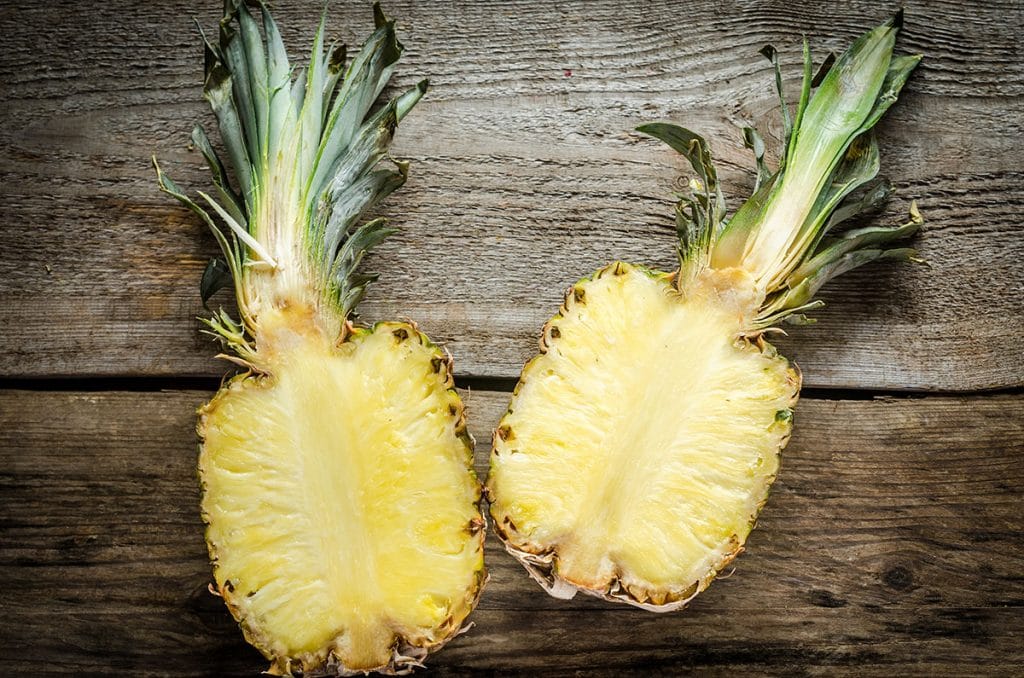
4. Before it became widely available, the pineapple was considered as a fruit of status – since it was not grown in Europe before the 1600s, only the elites and members of the nobility had access to the fruit.
5. The pineapple plant bears flowers with breathtaking hues ranging from lavender to bright red. But what’s most astonishing is that the flowers produce fruitlets that combine around the pineapple’s core. So, the pineapple fruit is, in fact, a collection of several fruitlets fused together.
6. Pineapples take two to three years to reach maturation!
Fun fact: If you plant the crown of the pineapple in soil, you can have your own pineapple plant. But you won’t get any giant pineapple growing underneath it… Disappointed? I feel you – I waited in vain for the giant pineapple when I was five …
Not-so-fun fact: Conventionally grown ones tend to be loaded with pesticides; about 20kg of active ingredient per hectare per cycle to be precise. So, if possible, go for organic pineapples.

Scientifically proven health benefits of the pineapple
1. Terrific source of vitamin C
One cup of pineapple chunks (165g) contains a whopping 78.9mg of the immune boosting vitamin C! The recommended dietary allowance (RDA) for vitamin C is as follows:
- Women aged 19 and above: 75mg/day
- Pregnant women: 85mg/day
- Lactating women: 120mg/day
- Men aged 19 and above: 90mg/day
- Smokers require 35mg/day more vitamin C than non-smokers
Besides offering protection against the common cold, vitamin C is also involved in:
- The production of collagen, the structural protein found in the skin, muscles, hair and bones where it acts as a scaffolding that provides strength and structure. As we age, the body’s production of collagen naturally begins to decline, paving the way for sagging skin, wrinkles and joint pain due to weakening cartilage.
- Wound healing and repair of sunburnt, dried or irritated skin.
- The synthesis of certain neurotransmitters.
- The absorption of iron, especially non-heme iron found in plant-based foods.
Did you know? The body’s requirements for vitamin C increases when you are stressed out or if you suffer from HPA-axis dysfunction.

2. Excellent source of various nutrients
The pineapple is also naturally rich in:
1. Bromelain – Researchers began extracting and studying bromelain, a mixture of two protein-digesting enzymes in the 1890s. Since then, over 1600 studies describing the medicinal properties of bromelain have been published! These have been smmarized below.
One common misconception is that the flesh of the pineapple is rich in bromelain, but that’s not entirely accurate. You see, the flesh contains only a small amount of bromelain which is found mostly in the stem and core.
2. Manganese – As a component of the antioxidant enzyme superoxide dismutase (SOD), which helps fight free radicals, this trace mineral can contribute to strengthening the body’s antioxidant defense system. Manganese is also necessary for healthy brain and nerve function.
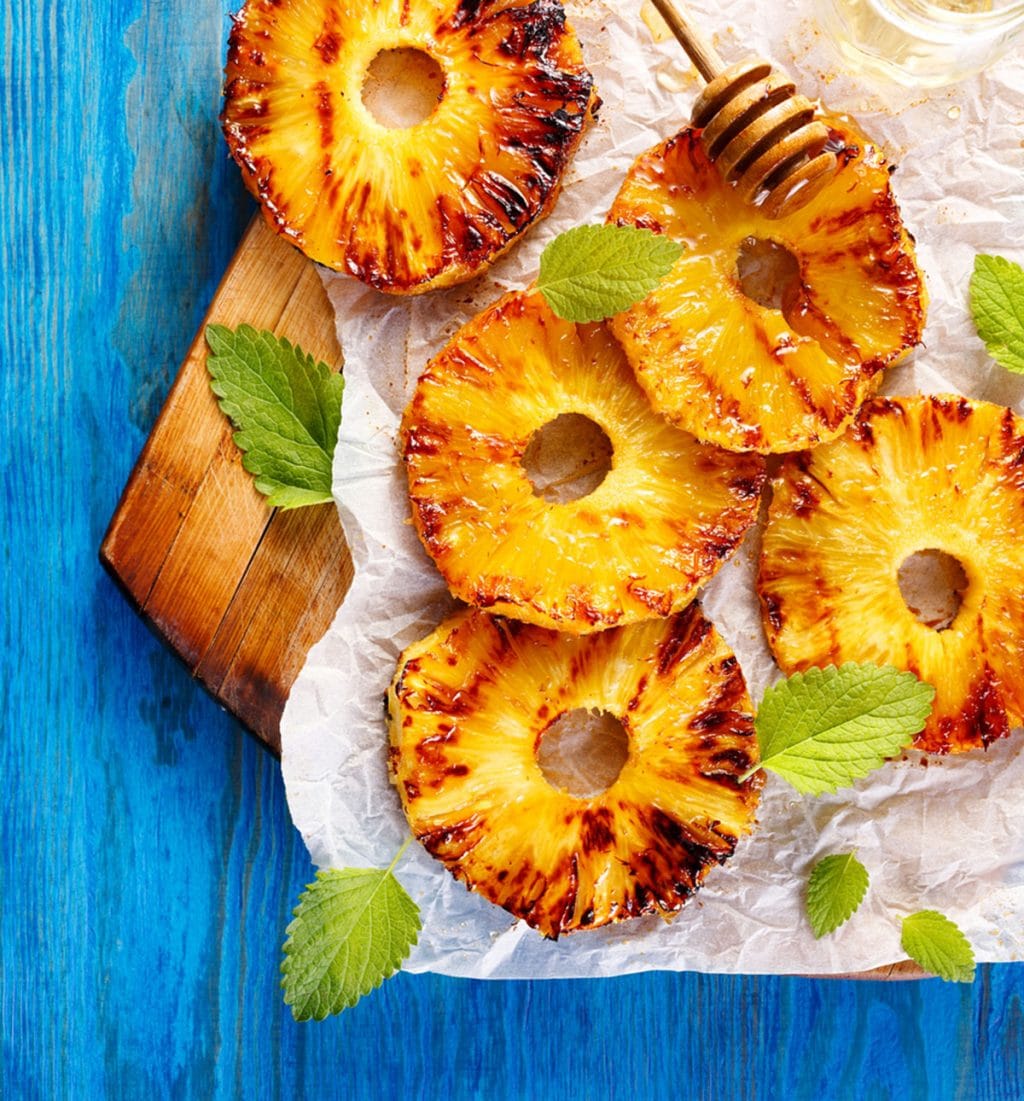
3. Potassium – This multi-tasking, electricity conducting mineral is crucial to heart function as well as skeletal and muscle contraction. In fact, dietary potassium has been found to improve blood pressure in those who are potassium deficient while also offering protection against ischemic strokes and heart disease. Potassium is also involved in preserving bone mineral density.
4. Thiamin – Also known as vitamin B1, thiamin assists the body in converting the carbohydrates you eat into glucose for energy. As all B-vitamins, thiamin is necessary for optimal brain and nervous system function. In fact, a thiamin deficiency can cause depression, irritability, fatigue, and headaches.
5. Tryptophan – Our body needs this amino acid to produce sufficient amounts of serotonin, also known as the ‘feel-good’ hormone.
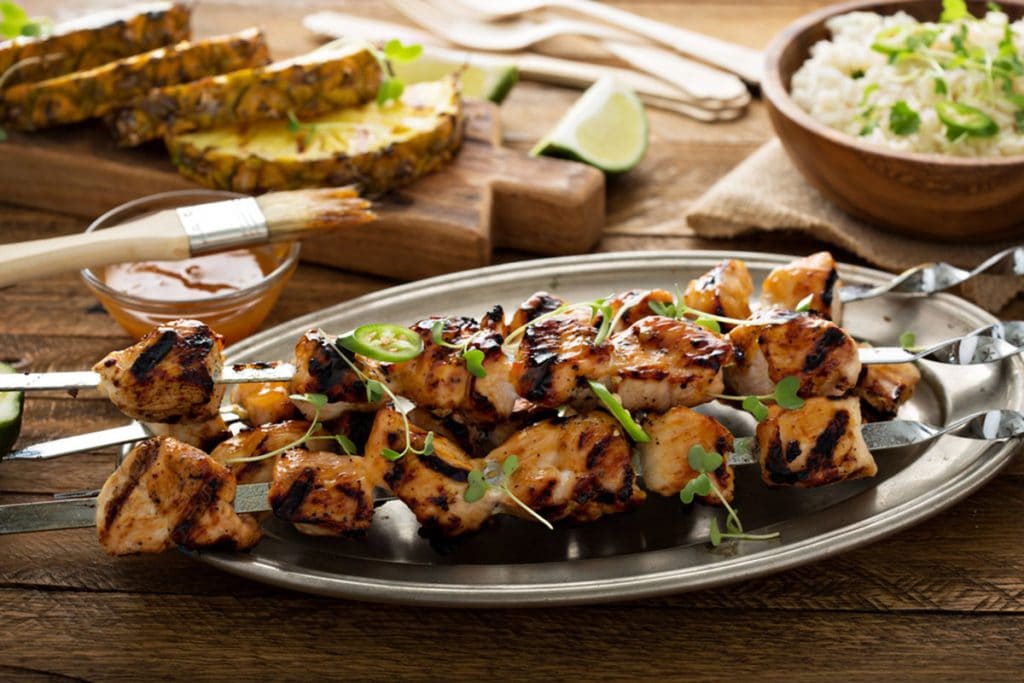
3. Rich in insoluble fiber
You’ve probably guessed it: insoluble fibers are those that remain practically unchanged when exposed to water. According to research, insoluble fibers act as a sponge in the intestines – they bind with water, adding bulk to the stool. This facilitates intestinal transit and can help improve constipation. By improving gut health, insoluble fibers can also ameliorate your skin’s health.
Research also shows that insoluble fiber:
- Increases satiety.
- Reduces risks of colon cancer by maintaining an optimal pH in the intestines thereby speeding up the removal of toxins from the body.
4. Improves digestion
Ever heard of using pineapple slices to tenderize meat? That’s not just another old wives’ tale. As mentioned earlier, the pineapple is rich in bromelain, a proteolytic enzyme that can break the peptide bonds that hold amino acids together. Once bromelain breaks these bonds, the meat tissue starts losing its firmness – in other words, the meat becomes tender.
What does this have to do with digestion? And why do so many digestive supplements contain bromelain?
Well, bromelain can help your body digest (break down) proteins in your foods while also enhancing the activity of digestive enzymes. This can, not only facilitate nutrient absorption, but can also reduce acid reflux and heartburn symptoms.
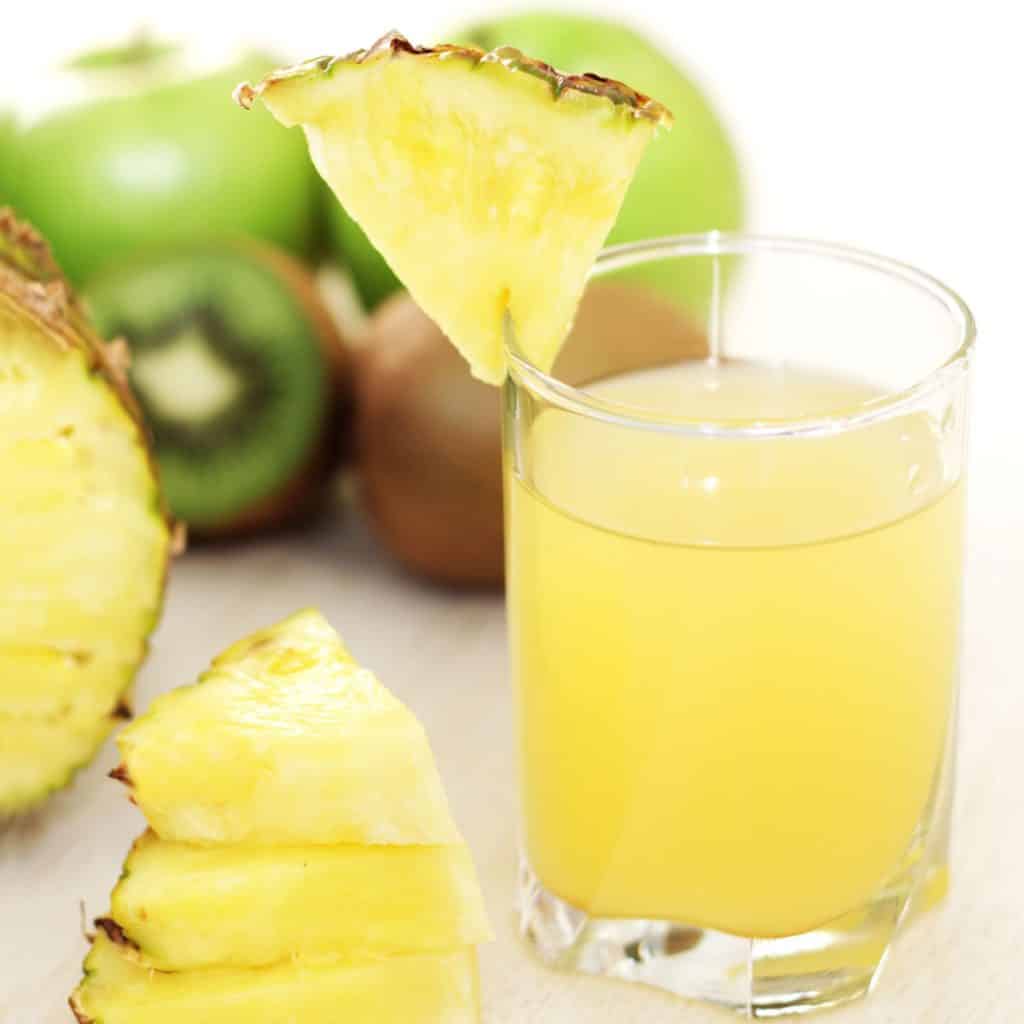
5. Possesses potent anti-cancer properties
In a lab experiment, researchers discovered that bromelain is more efficient and much safer than 5-fluracil, the drug used for over 40 years in cancer treatment. The scientists reported that bromelain can selectively kill cancer cells without harming healthy ones, unlike 5-fluracil which, not only destroy cancer cells but also causes irreparable damage to healthy cells and tissue.
And a more recent study indicated that bromelain could inhibit the growth and proliferation of four human gastrointestinal cancer cell lines.
6. Protects the heart
Here’s some good news for folks taking aspirin: bromelain is a much safer alternative. This enzyme can, not only fight blood clotting, but it may also prevent blood platelets from sticking together or accumulating on the walls of blood vessels. In other words, bromelain can reduce the risks of heart attacks or strokes.
How does bromelain do that? Well, to better understand the mechanism of action, it can help to know that clots formed in the arteries consist mostly of fats and cholesterol held together by a protein mesh known as fibrin. Drugs that help dissolve clots in arteries work by degrading fibrin and so does bromelain. Research indicates that bromelain promotes the conversion of plasminogen to plasmin which then breaks down the fibrin clots.
But that’s not all; bromelain can even protect against atherosclerosis, the formation of plaques in the arteries. In one study, bromelain was able to ‘clean’ atherosclerotic plaques in the aortas of rabbits. Plus, as mentioned earlier, the pineapple is rich in potassium which can help regulate blood pressure.
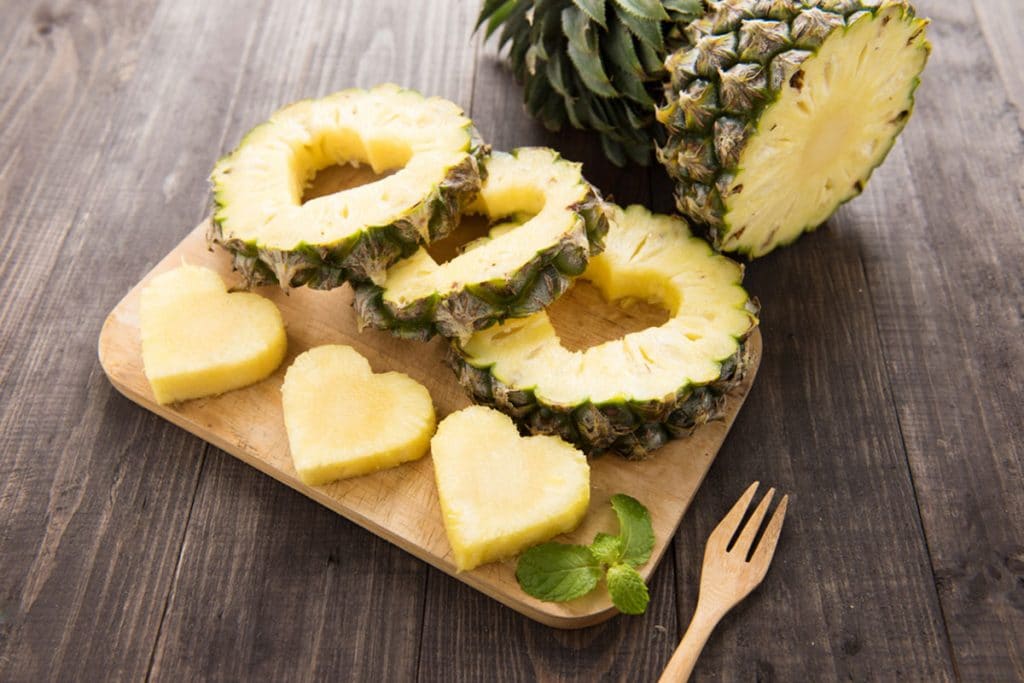
7. Powerful relief from inflammatory pain
Various studies indicate that bromelain can be as effective as non-steroidal anti-inflammatory drugs (NSAIDs) in relieving the pain and stiffness of osteoarthritis. And guess what? NSAIDs can considerably affect the immune system by increasing intestinal permeability while also increasing the risks of heart attacks. On the other hand, bromelain is a safer alternative to NSAIDs since it is much better tolerated and does not usually cause side effects (unless one takes more than 10g/kg in one day).
8. Offers protection against cognitive decline
Did you know that new research considers neurodegenerative diseases such as Alzheimer’s and Parkinson’s as autoimmune diseases? Healthy brains contain some amyloid plaques as well as neurofibrillary tangles (a collection of proteins) – these are believed to perform necessary functions in the brain.
Usually, the immune system produces antibodies whose role is to remove amyloid plaques once these degrade. These antibodies also assist the body in eliminating neurons damaged by the tangles.
However, if the immune system goes awry (such as in the case of chronic inflammation), it can start over-producing these antibodies. Not only do these antibodies fail to remove degraded amyloid plaques and tangles adequately, but they may also begin to attack healthy brain cells. This marks the onset of Alzheimer’s disease which worsens as the plaques build up in the brain.
Thanks to its ability to reduce inflammation, bromelain could help soothe the immune system, thus reducing the production of antibodies that attack healthy brain cells. Moreover, since bromelain can break down proteins, it is partly able to degrade the amyloid plaques that thwart healthy brain function.
9. Effective at treating sinusitis
Research indicates that bromelain can offer relief from the annoying symptoms of sinusitis, the painful inflammation of the sinus cavities usually caused by fungal, bacterial or viral infections. In one study, bromelain helped resolve nasal inflammation in 85% of participants – only 40% of the placebo group showed a similar improvement. It appears that bromelain is able to thin nasal secretions while also preventing the production of inflammatory molecules.
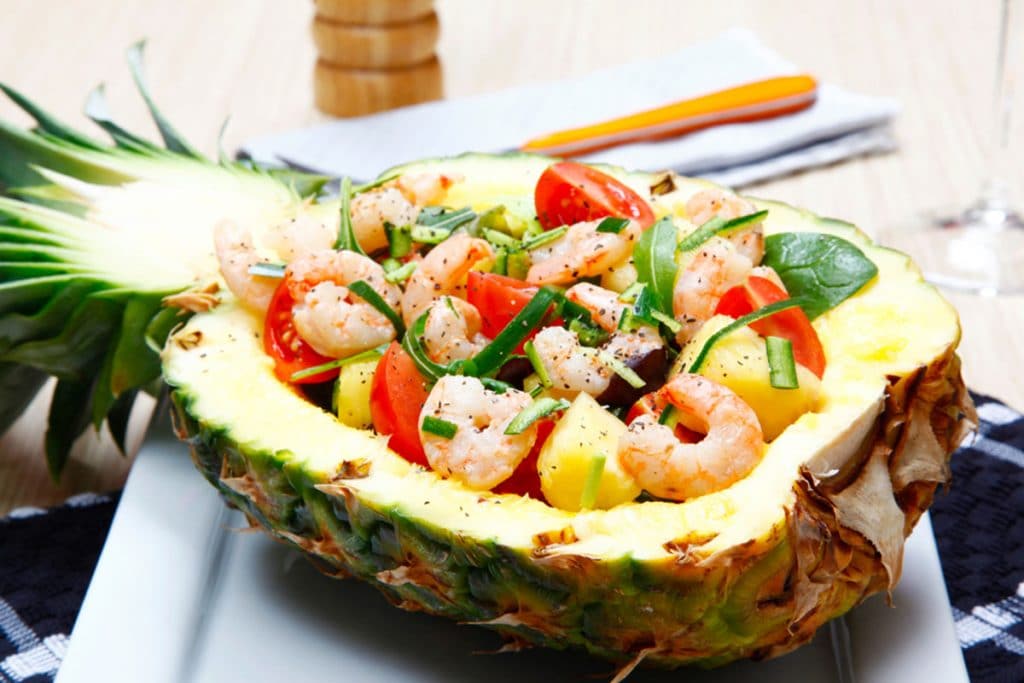
10. Effective anti-fungal agent
Bromelain can prevent the growth of disease-causing fungus by up to 90 percent! Although this has to be reproduced in a human study, the results remain impressive. In fact, the researchers report that bromelain could be an effective substitute for dangerous fungicides sprayed on crops.
It turns out that bromelain is able to dissolve the biofilms produced by bacteria and fungus. Have you ever felt a slimy, glue-like substance on your teeth? Well, this substance is the biofilm produced by bacteria and fungus – they use it to adhere to a surface, your teeth for instance, and colonize the environment where they are. (You could try coconut oil pulling to get rid of these nasty oral biofilms and naturally enhance your mouth’s flora.) By disrupting the biofilm, bromelain can prevent fungus like candida from spreading their turf.
Can bromelain reduce gluten intolerance?
Some may claim that, by destroying Candida’s biofilm, bromelain can reduce gluten sensitivity. In my professional practice, I have noticed that patients who take about 2,000mg of bromelain per day experience fewer symptoms when they accidentally consume gluten. However, I believe that the mechanism of action here is a reduction in inflammation (which trigger most symptoms associated with gluten consumption). Plus, since bromelain breaks down protein, it is likely that it helps the body digest the protein gluten faster thereby helping to speed up its elimination from the diet.
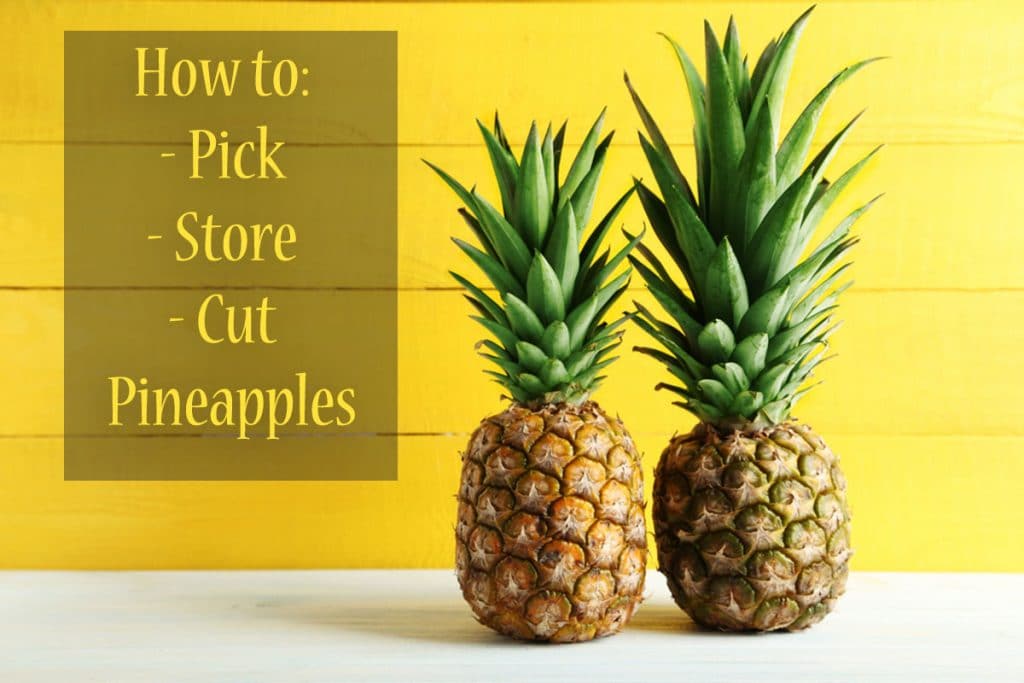
Picking the perfect pineapple
Choosing the right pineapple can be intimidating especially with all the myths on the wild, wild web. The following tips will help you score the best in the bunch. But remember: when buying a pineapple, make sure it is as ripe as you need it to be since pineapples don’t continue to ripen once they are harvested.
- The color test: You’ve probably heard that color doesn’t matter when it comes to pineapples and that even the greenest fruits can be sweet. Well, that’s a myth perpetuated by big food companies – the sweetest pineapples have a golden skin. Since pineapples ripen from the stem up, choose one with a skin that is at least 50 percent golden.
- The appearance test: You don’t want a fruit with brown, withering leaves or a wrinkled skin with mold or mushy spots – these indicate an overripe or rotten fruit.
- The leaf test: What about plucking a leaf to find out if it comes out easily? Sorry, but that’s another myth. You can try it if you want but this ‘tip’ will only tell you if the pineapple is old and the leaves are drying out. So old means ripe, right? Well, not necessarily – the fruit may have been harvested too early and since pineapples don’t continue to ripen once harvested, you could be buying a fruit that’s practically tasteless.
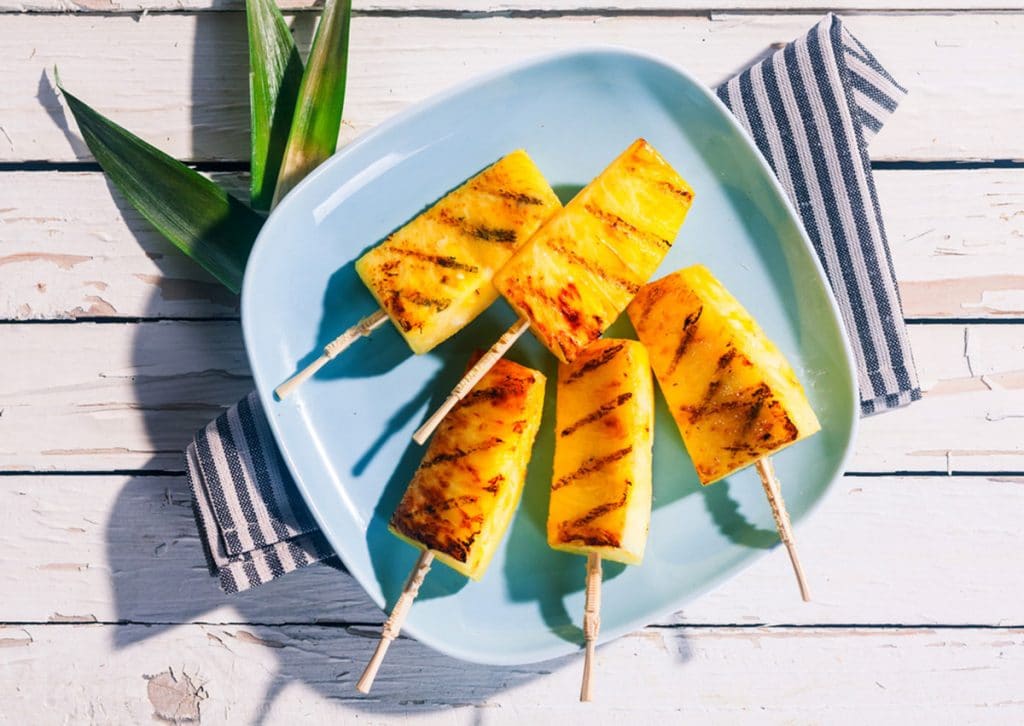
- The smell test # 1: Smelling the base of the pineapple may sound like a weird thing to do but that’s one of the best ways to find out if the fruit is ripe or over-ripe. What you want is a fruit with a light, sweet smell instead of no smell at all (not ripe yet) or a musty, fermented-like scent (over-ripe and probably starting to spoil).
- The smell test # 2: Pineapples that smell nice both at the top and the bottom are perfectly ripe and ready to enjoy.
- The gentle squeeze test: A ripe pineapple will have a small amount of ‘give’ when pressed gently – you still want the fruit to be pretty firm though. If the pineapple bruises easily when pressed gently, walk away.
- The weight test: Compare fruits that are about the same size and choose the heavier one – the more juice a fruit has, the heavier it will be.
How to store pineapples
- Unpeeled, ripe pineapples – Keep at room temperature for up to two days. Some people keep the fruit upside down to let the juice flow back to the top but that may be another old wives’ tale. If you don’t plan on using the fruit within two days, refrigerate it but make sure to wrap it properly since pineapples tend to absorb smells.
- Peeled pineapples – Refrigerate in an airtight container for three to five days. You can cut the fruit once you’re ready to eat it – chopped pineapples tend to dry out and lose their nutrients.
- In the freezer – Chop the pineapple in whatever size you want and place the chunks on a baking tray covered with wax paper – this will prevent the juicy chunks from sticking to the tray. Once thoroughly frozen through, keep the chunks in an airtight container or freezer bag, making sure to remove as much air as possible from the bags. You can also puree the pineapple and freeze it in ice cube trays. Once frozen, remove the pineapple ice cubes and store them in a freezer bag. Or you could pour the pureed pineapple in Popsicle moulds.
Did you know? After six days, the vitamin C content of chopped pineapple pieces drops by about 10%!
How to cut pineapples
The video below will show you how to cut the fruit without wasting too much of the skin. I don’t know why most people discard the core – yes, it’s quite hard, not very juicy or sweet but that’s where the bromelain is! So why not try eating the core along with the fruit? You simply have to slice the fruit thinly so that it can be easily chewed – I personally find that the hard core pairs amazingly well with the soft, juicy flesh.
Now that you know everything worth knowing about the pineapple, let’s get cooking!
Creative pineapple recipes that will impress everyone
I love cooking. And I love creating mouth-watering dishes that look like intricate works of art but don’t require me spending hours in the kitchen. One ingredient that helps me wow my guests is the pineapple. So save the following recipes for the next time you want to try something with a little more oomph (simply click on a recipe’s title to access it). And don’t worry: all these recipes are grain, gluten and soy-free.
Breakfast ideas
Pineapple Mojito Green Smoothie
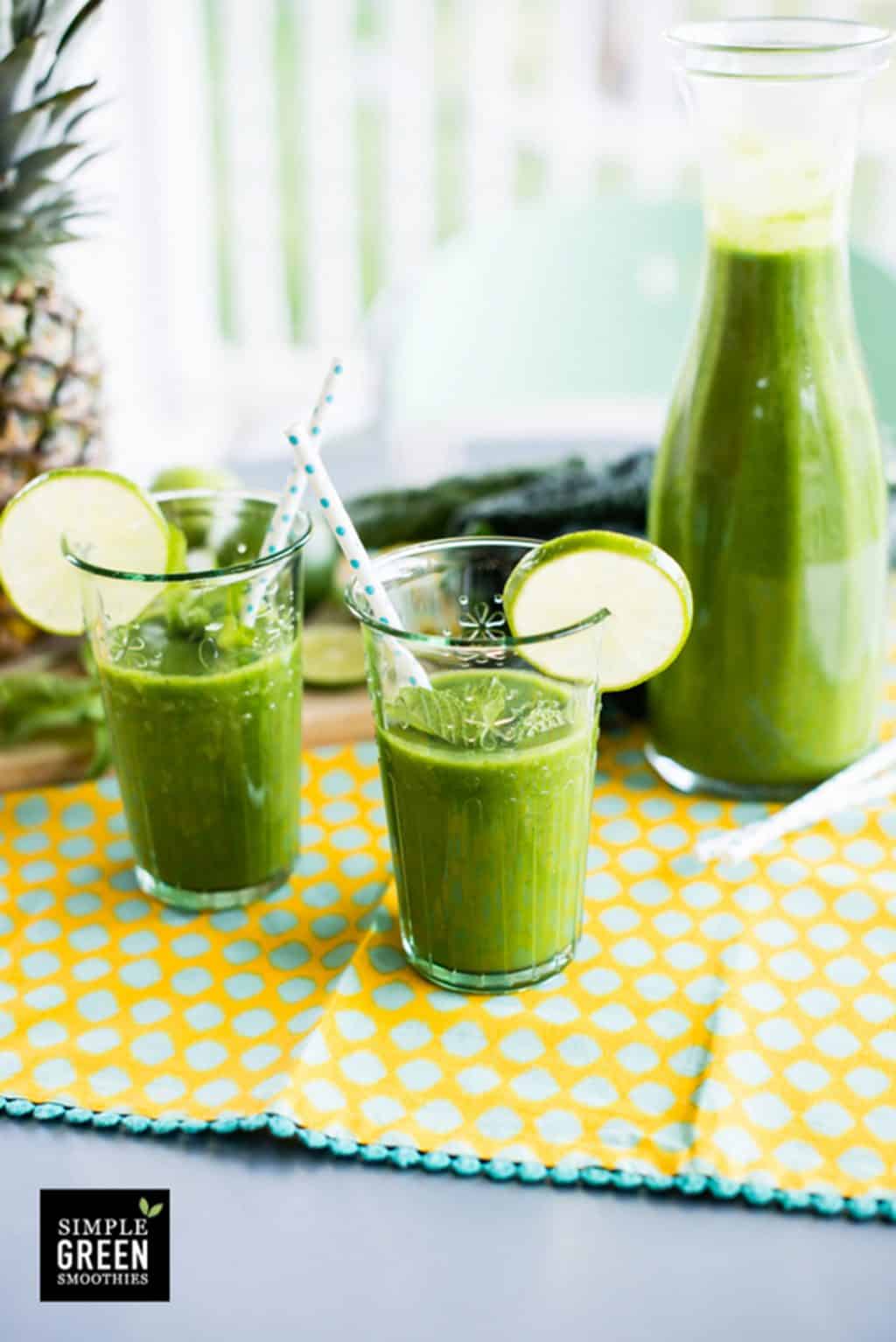 Photo: Simple Green Smoothies
Photo: Simple Green Smoothies
Eating eggs every single morning gets super boring. Fast. But instead of going back to conventional cereal-based breakfasts, why not try green smoothies? I admit that the intense green color can be scary but don’t worry – you won’t taste the kale.
Suggested modifications:
- No kale or coconut water on hand? No worries – try spinach, baby bok choy, lettuce or any green leafy veggie instead. Water can be used in lieu of coconut water.
- If you have a particularly hectic day ahead of you, add some healthy fats to your green beverage – this will help keep your blood sugar levels steady. You can use half cup of full-fat coconut milk, one tablespoon of virgin coconut oil, a quarter avocado or one tablespoon of coconut flakes, nuts or nut butters.
- For a natural energy boost, mix in a tablespoon of maca powder.
- To boost your immune system further, add a small piece of ginger.
Carrot Pineapple Paleo Muffins
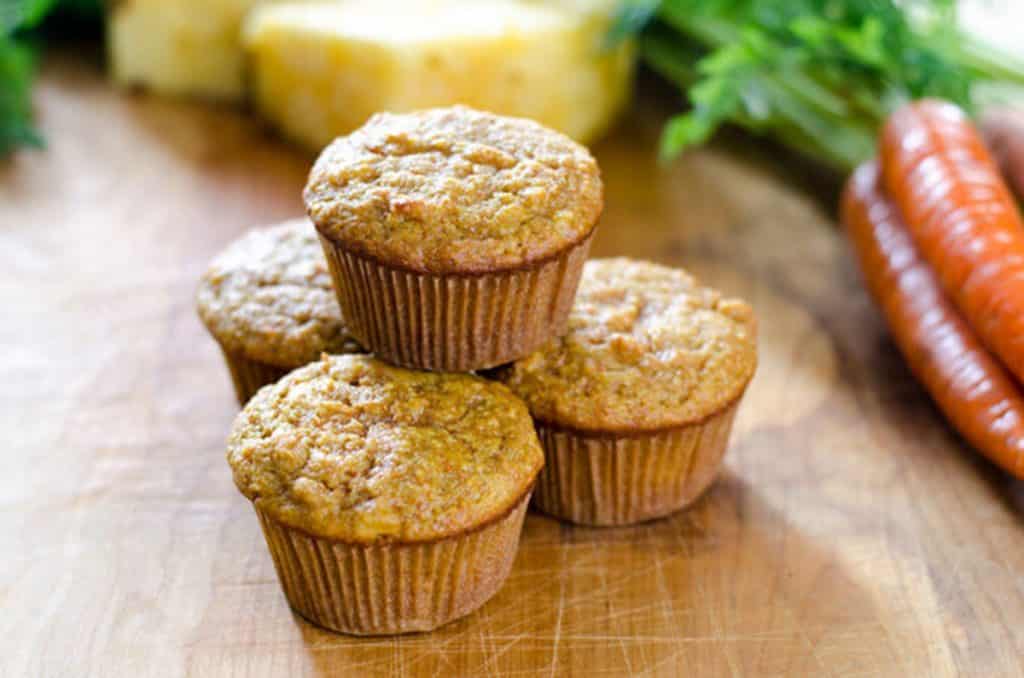 Photo: Cook Eat Paleo
Photo: Cook Eat Paleo
What I like the most about these muffins is that they freeze well and can be reheated in a jiffy whenever you’re in a rush. Or if you want to treat yourself like. Right. Now.
Suggested modifications:
- If you don’t have any ghee on hand, use grass-fed butter virgin coconut oil instead.
- Got some impromptu guests tonight? Turn these breakfast muffins into desserts by drizzling some coconut butter glaze on top.
Lunch / Dinner ideas
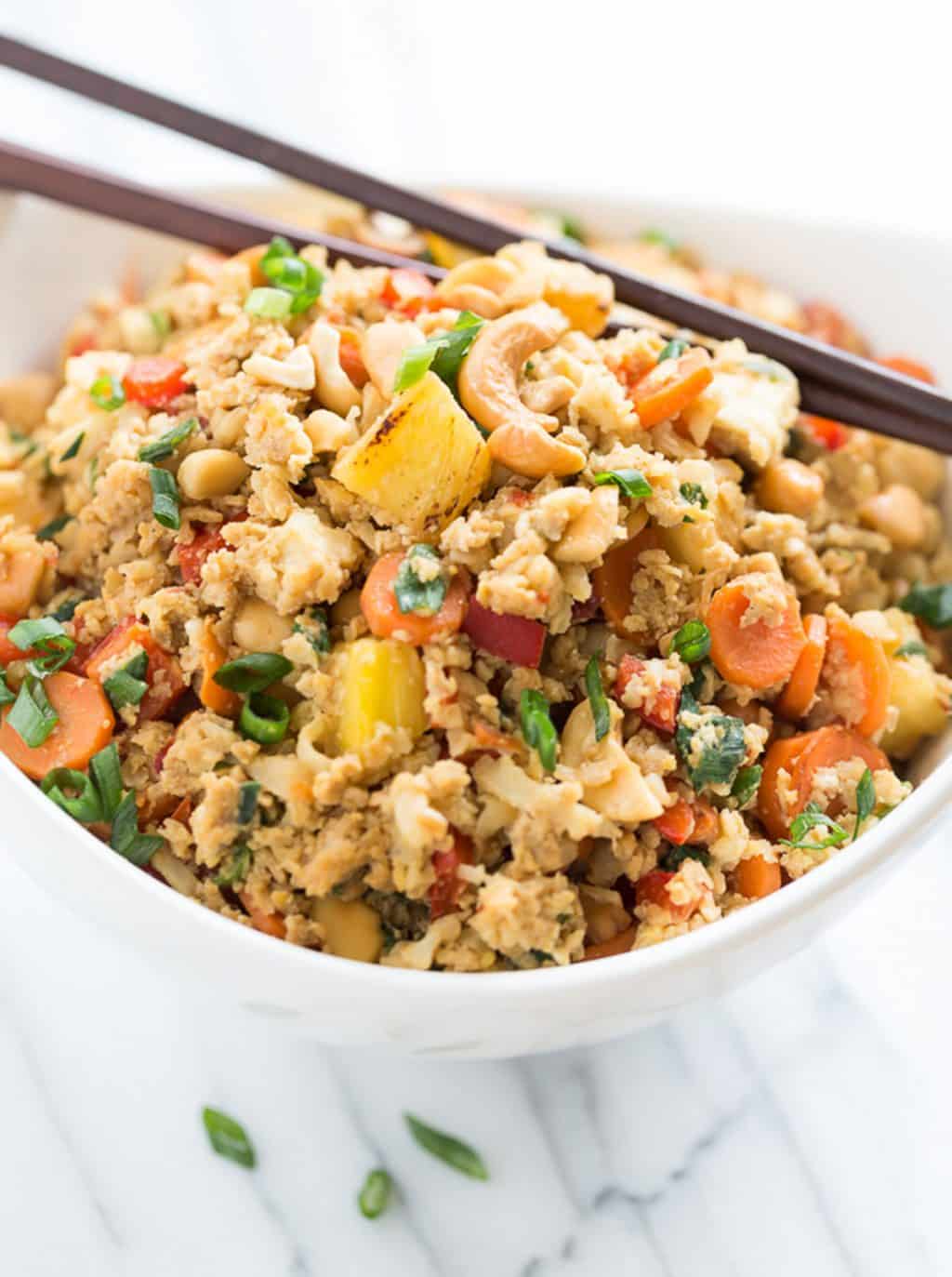 Photo: Get Inspired Everyday
Photo: Get Inspired Everyday
You’re probably thinking ‘OMG! But rice is a grain!’ True. But this fried ‘rice’ consists of grated cauliflower instead of rice. No, it doesn’t taste weird – in fact, be warned that this fried rice may become addictive!
You can choose to grate the cauliflower if you want – I prefer using my blender because it’s way faster and I’m not a fan of having to remove pieces of veggie in my hair. To do so, just separate the stalk from the florets; pulse and set aside. Then add the florets; pulse again. Both the stalk and florets should be pulsed until you get pieces of cauliflower that look like grains of rice.
Suggested modifications:
- Boost the protein content of this dish with eggs, sautéed beef, chicken, turkey or fried fish.
- Use grass-fed butter or ghee with a little bit of garlic instead of the avocado oil.
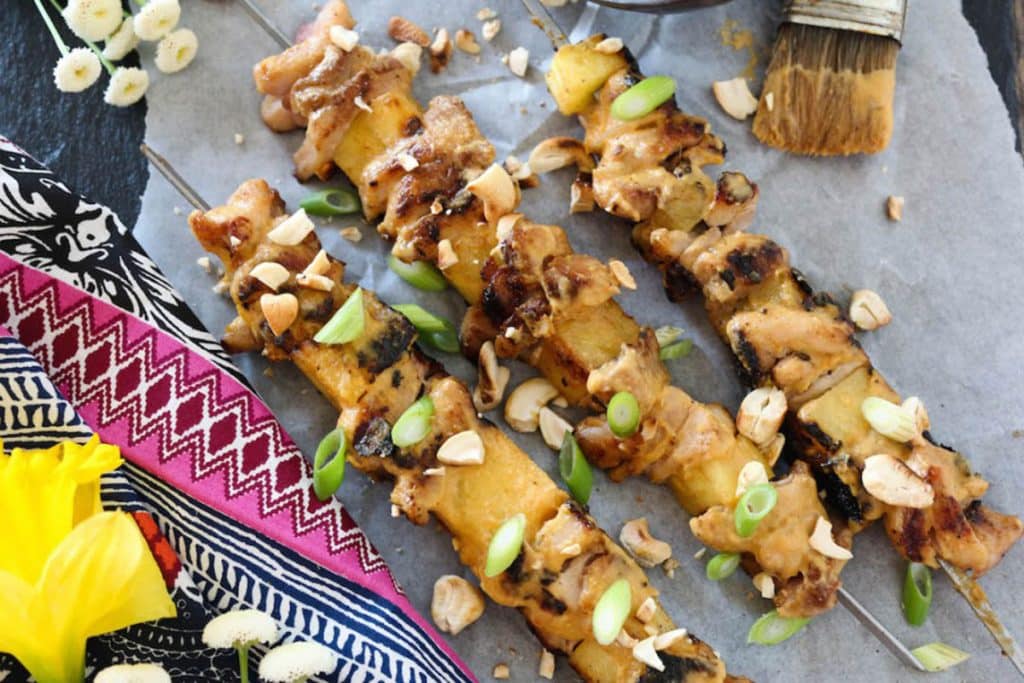 Photo: PaleOMG
Photo: PaleOMG
I don’t know about you but chicken kabobs are one thing I can never get enough of. Besides litchis that is. This recipe reminds me of college days when we used to grill our chicken kabobs on the beach.
Suggested modifications:
- If you can tolerate peanuts, use raw peanut butter instead of tahini or any other type of butter. Chicken, peanuts and pineapple make an amazing combo.
- If you’re in a rush, skip the skewers – just make sure that each kabob is directly on the grill.
- Serve with some homemade cabbage slaw and sweet potato chips.
Snack & Dessert Ideas
Fresh Pineapple Crisp with Coconut Whipped Cream
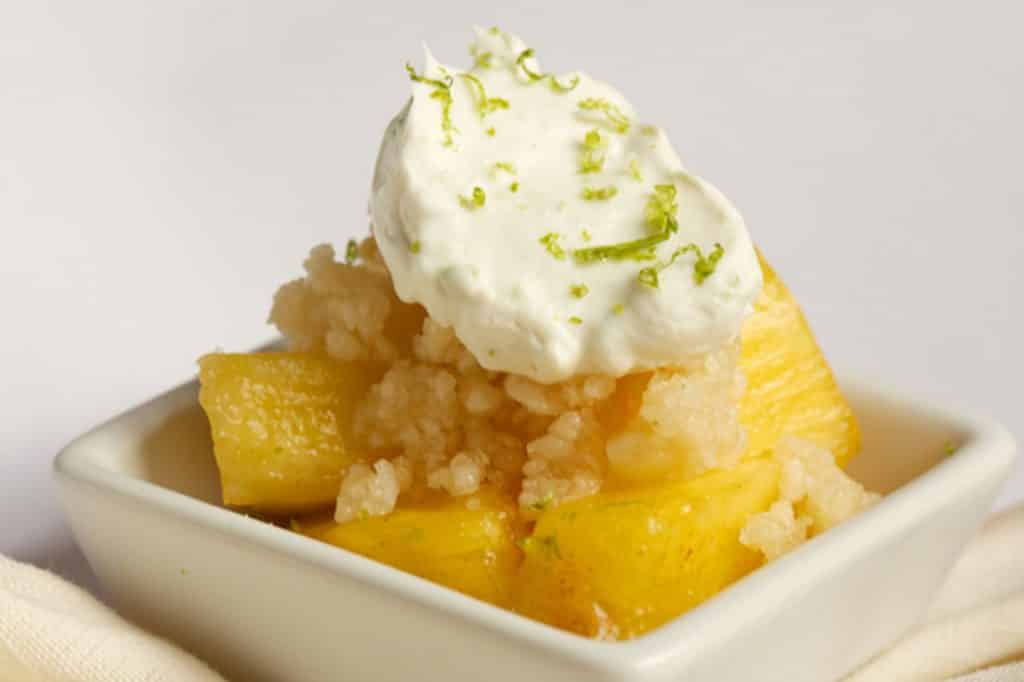 Photo: Get Inspired Everyday
Photo: Get Inspired Everyday
Feeling like having a fancy looking snack? Try this pineapple crisp. I personally think that this is too sweet and would probably omit the syrup.
Suggested modifications:
- If you’re feeling adventurous, try sautéing the pineapple bits in some coconut oil until they caramelize. Let the pineapple cool before adding to the blender.
- Can’t have nuts? No worries – just use roasted coconut instead.
I don’t have a sweet tooth and, besides chocolate cakes, I’m really not interested in cakes. But this cake is so ‘Oooohhh’ that I would probably dig in. If you sent me a slice that is! The only modification I would bring to this recipe would be substituting raw, cane sugar for the honey – I believe that sugar is okay as a very occasional treat (plus honey in cakes is not my thing).
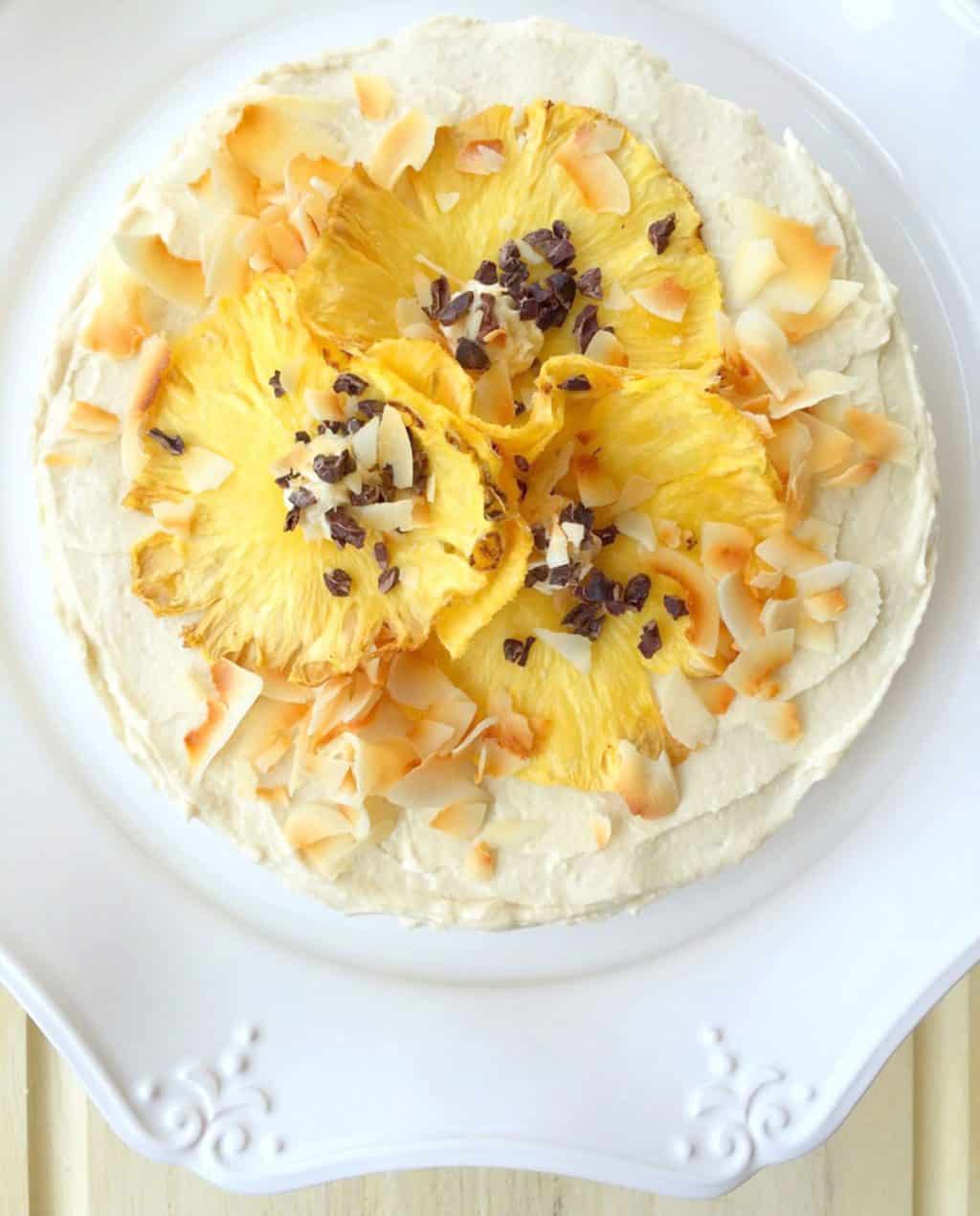 Photo:Fresh Planet Flavor
Photo:Fresh Planet Flavor
Now, let’s hear from YOU: what’s your favorite pineapple recipe? Share in the comments below or on our facebook page.



